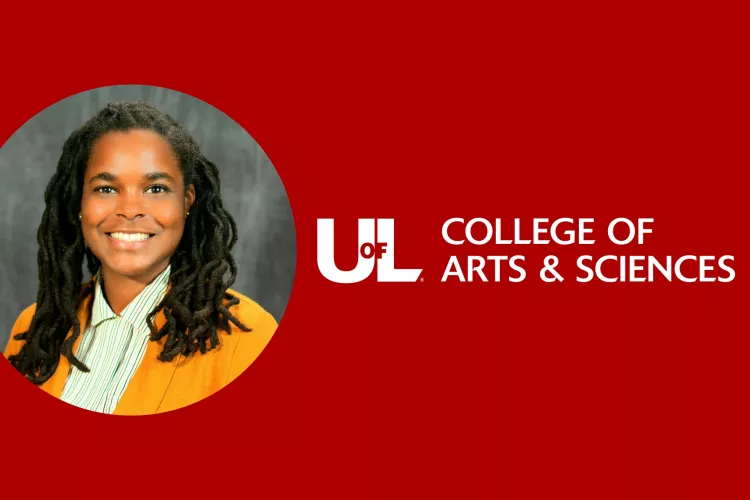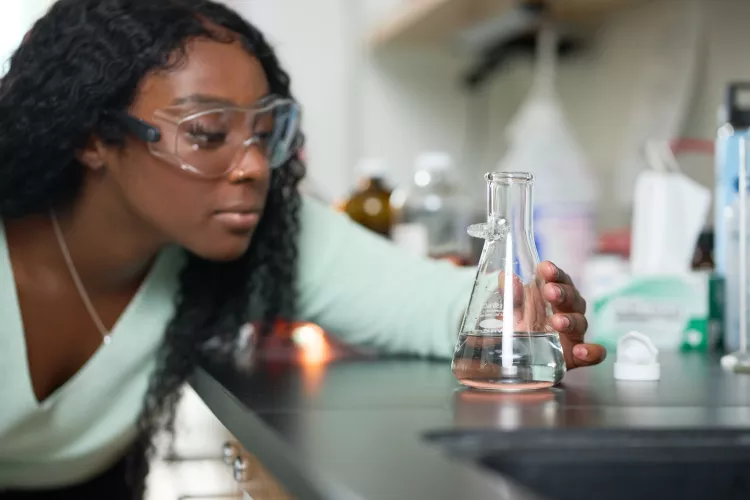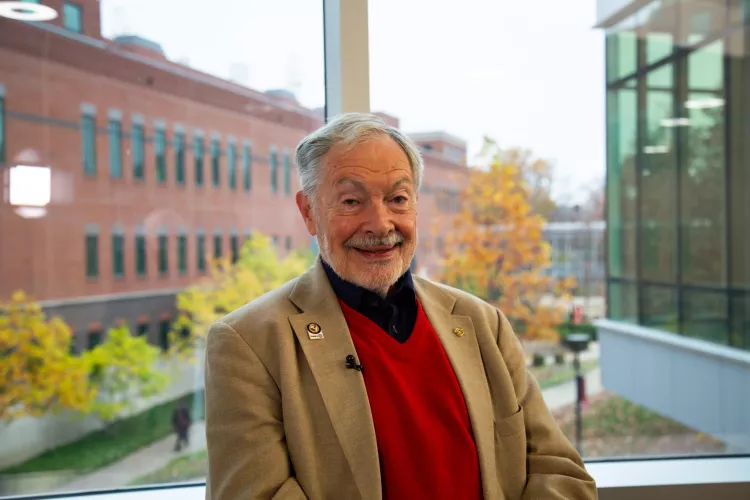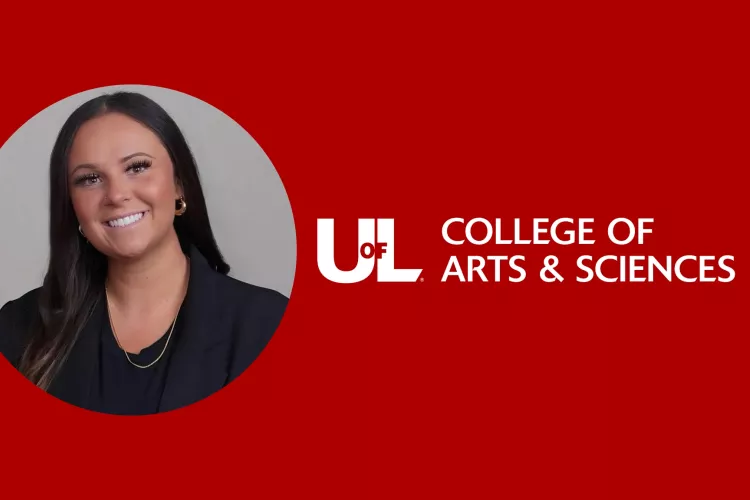After Netherlands Fellowship, Biology Graduate Student Publishes Paper on Impact of Ash on Aquatic Systems
July 7, 2025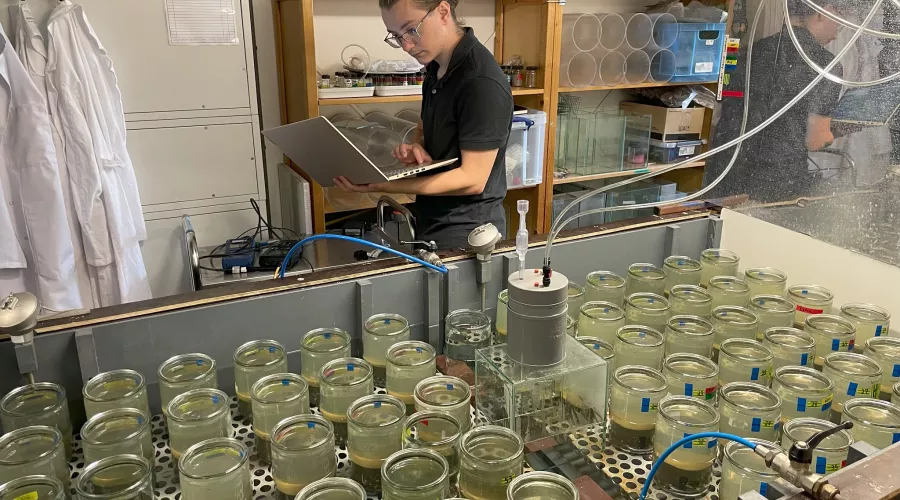
Nathan Earl
By Stephanie Godward, Communications and Marketing Director, College of Arts & Sciences
After conducting experiments in the Netherlands and publishing a paper on the impacts of white and black ash on aquatic systems, biology graduate student Nathan Earl has embraced his identity as a scientist.
“It was hard to call myself that when I hadn’t produced much up to this point, but being able to work in this awesome space with people who were willing to listen to my thoughts and opinions and offer their own experience, in addition to working on this project from its conception all the way to its publication, I really now feel comfortable with that label. I am excited to continue working with many of the people I have met along the way,” he said.
The paper, “Black and White Fire Ash Alters Greenhouse Gas Emissions and Temporarily Reverses Carbon Source-Sink Status in Aquatic Mesocosms,” published this month in Environmental Science and Technology, examines how ash from wildfires affects greenhouse gases in water. This work was conducted at Wageningen University in the Netherlands, and was funded by a WIMEK Fellowship.
Earl and co-author, Assistant Professor of Biology Andrew Mehring, added two types of ash—white and black—to small, controlled pond-like environments. They discovered that white ash reduced how much carbon dioxide (CO₂) was released from the water. In some cases, it even caused the ponds to absorb carbon dioxide from the air. But at the same time, the white ash made the ponds release more methane (CH₄)—another powerful greenhouse gas.
In simple terms: adding white ash made the ponds act more like a "carbon sponge" (absorbing CO₂), but also made them leak more methane into the atmosphere.
"This is very important, because fire frequency and intensity seem to be increasing in the 21st century as a result of many factors, including climate change, but also because a lot of aquatic systems are sort of hot spots for biogeochemical cycling,” Earl said. “A lot of small freshwater bodies tend to be disproportionate methane emitters for example.”
Having increased knowledge of these impacts of ash can help scientists to gain a better picture of global carbon budgets, especially as humanity is forced to reconcile with the planet’s carbon cycle more attentively in this century.
Mehring said it was particularly surprising to both of them to find that when added to the mesocosms, white ash caused carbon dioxide to be pulled out of the air and into the water in the absence of sunlight (without photosynthesis).
“That was really interesting, and it was something we did not expect to see,” Mehring said. “When you think about a fire as being combustion of organic matter, sending all this smoke and carbon back into the air is a source of emissions, but if some of the ash is going into a nearby lake or reservoir, this is actually causing some carbon to move from the air back into the water as well. That is going to help to change our perceptions about how fires effect the climate system.”
The findings could inform further studies that could help to understand how bodies of water operate in an environment impacted by climate change, fire, and ash.
“The amount of greenhouse gas emissions from small water bodies is minor compared to what we’re emitting through other means, but it’s still important to understand. In terms of methane especially, it’s not an insignificant amount. And if there’s an effect like Dr. Mehring mentioned—where carbon uptake occurs—not just through the mechanisms I discussed but also because ash can fertilize phytoplankton and algae, that could result in substantial carbon capture. If that response is strong enough, it’s definitely something we should be paying attention to,” Earl said.
He also states that wildfire impacts on water resources go beyond algal blooms. Fires can also mobilize large amounts of heavy metals that are normally bound in soil and vegetation. Once released, these metals can wash into drinking water reservoirs and other critical water sources, making this research even more important to human health and safety.
Having the chance to work abroad gave Earl a new perspective on the differences compared to working in the US.
"There is a more European model of lab structuring where there is one common lab space with lots of different instruments and trained technicians for all of that equipment, and anytime we need to access that space or those materials, we can schedule a time to do so, not worry about having to train on a new piece of equipment, or about procuring that equipment in the first place. In contrast, in American models, individual labs might have to acquire all of that instrumentation,” Earl said. “So being able to work in that space was a great way to make a lot of progress on the study while also not having to get bogged down in some of the details of acquiring all of that stuff. It was a really positive experience.”
Mehring encourages other graduate students to pursue fellowships like this one abroad, as it can not only provide experiential learning, but also help students to become global citizens with expanded perspectives. Looking ahead, he is excited to continue this research as well.
“There have been other studies—like during the megafires in Australia—showing that the ash and smoke carried over the ocean triggered a massive algal bloom. That bloom pulled about as much carbon out of the atmosphere as the fires had released in the first place,” Mehring said. “Ash is rich in nutrients and can fertilize bodies of water, so we're interested in what happens when sunlight allows algae to grow. How much of that growth is due to the ash? And how much is boosted by extra carbon dioxide from the air entering the water? What are the implications of that for drinking water supplies and human health?” Earl and Mehring intend to continue to find answers to these questions to support our global understanding of these impacts moving forward.
Related News
